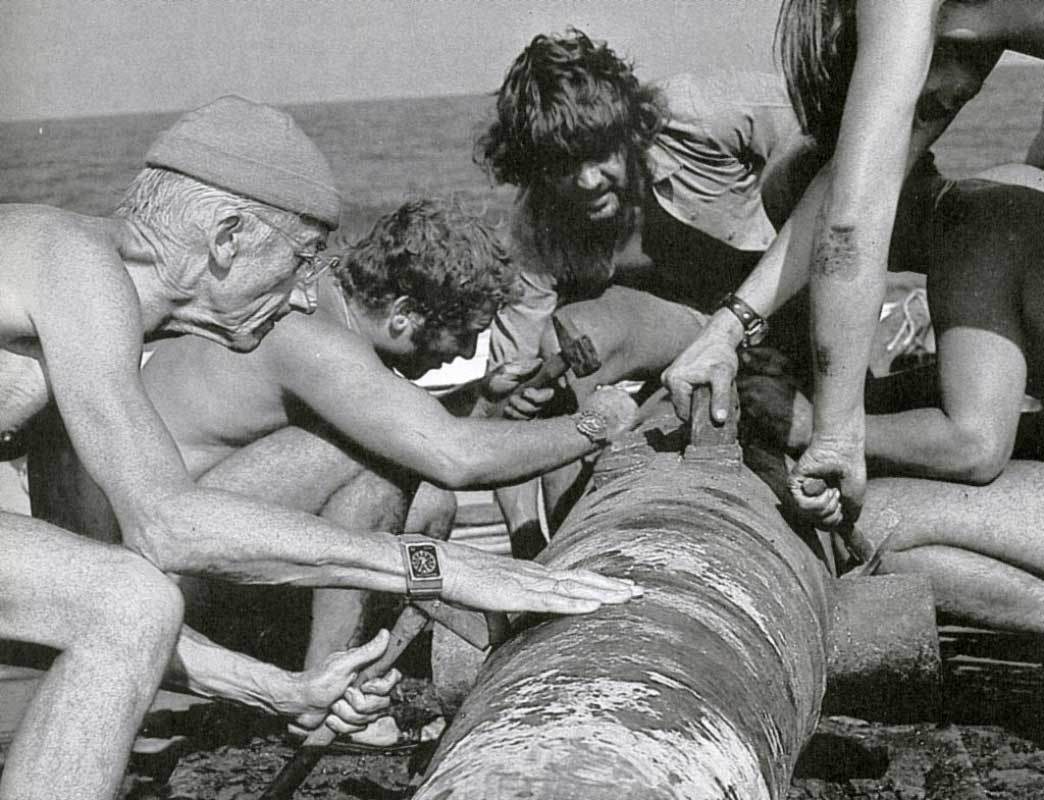
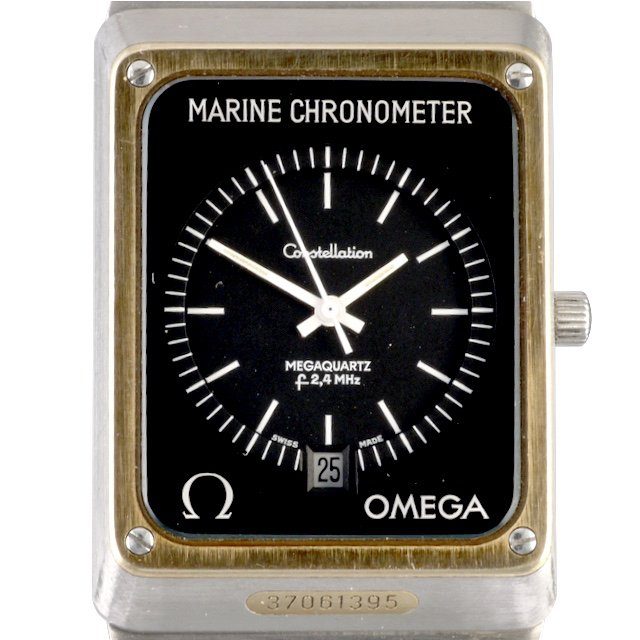
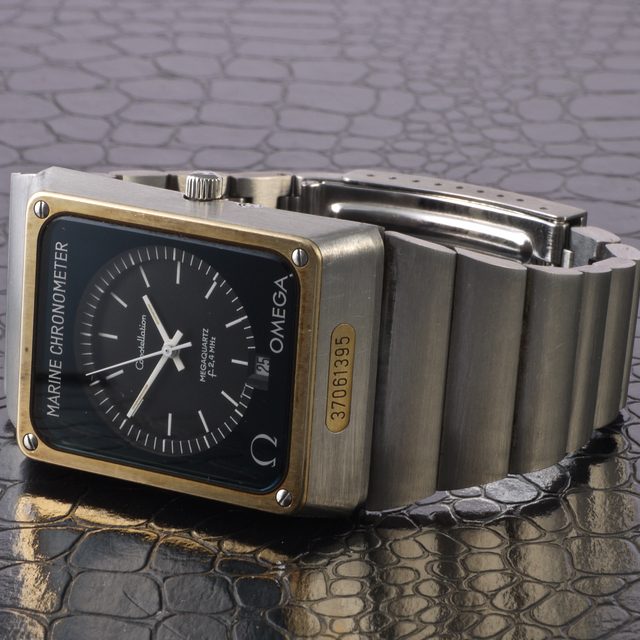
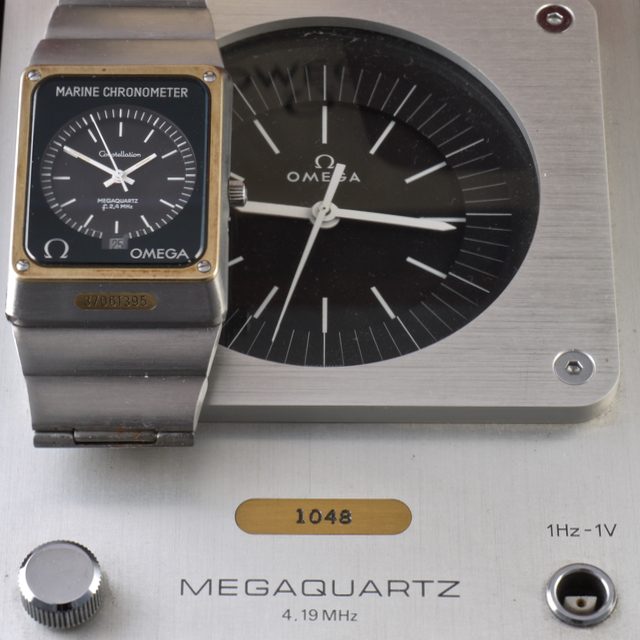
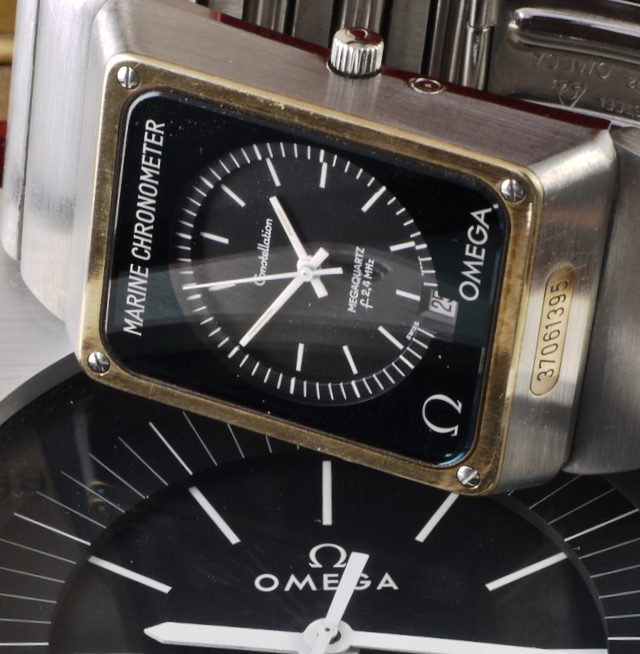
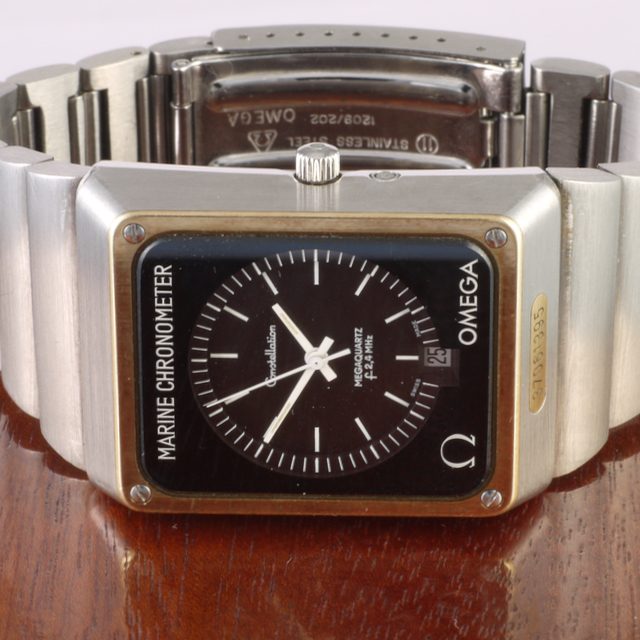
Omega Marine Chronometer
The Altair home computer kit allows consumers to build and program their own personal computers1975 Omega Marine Chronometer cal. 1516 ref. ST 398.0832, 12.4 X 32.7 X 44mm. case.
The Omega Marine Chronometer (references 1511 & 1516) with its integrated bracelet and its quartz caliber was a beloved piece of Commander Jacques Cousteau. It was the first wristwatch ever to be awarded certified status as a Marine Chronometer. Developed by John Othenin-Girard, it is one of the most accurate non therm-compensated production watches ever made.
The first ever specialized diving watches were the Panerai, used by the Italian frogmen in the Second World War. Actually they were Rolex 3646s with a special dials made by Panerai.
Right after WWII, two French combat diving corps started to search for a military grade diving watch, big and easy to read underwater, hermetically sealed and capable of absorbing shocks, which helped Blancpain to develop the legendary Fifty Fathoms introduced in 1953. The transformation of the simple water resistant watch to the tool diver watch happened at that exact point. Next year Rolex stepped out with perhaps the most famous diver watch of them all, the Rolex Submariner. From that point most of the Swiss companies started to shift their attention towards the sea, trying to produce reliable underwater-capable wristwatches.
All 1000 examples that were ever produced, were sent for testing for their chronometer status and after 63 days of relentless testing the mean variation was less than 0,002 seconds per day!! The Marine Chronometers were presented with certificates showing their individual performance over the 63 days period and when introduced in 1974, the model had a list price of 761 GBP. By contrast the Speedmaster Professional was on the market at 124.50 GBP. In 1976 the ref.1516 was introduced to the market (7000 pieces) with a few small changes.
Omega was founded in 1848 by Louis Brandt at the age of 23. The brand’s reputation grew fast and in 1895 the watches achieved a precision of 30 seconds a day.
By the turn of the 19th century Omega was one of Switzerland’s largest watch companies with 240,000 watches produced annually and employing 800 people.
Omega made its debut in sports during the Gordon Bennett international ballooning Cup in 1917; since then Omega has gone on to be the official timekeeper at 21 Olympic Games.
In 1936 Omega set the remarkable World precision record of 97.8 points at the Kew-Teddington observatory in England.
In 1957, with motorsport in mind, Omega launched the Speedmaster, which in 1965 was chosen by NASA as its official chronometer in Space. Four years later the Moonwatch was the first watch to be worn on the Moon, when on 21st July 1969 Neil Armstrong made his giant leap for mankind. Currently Omega belongs to the Swatch Group.
